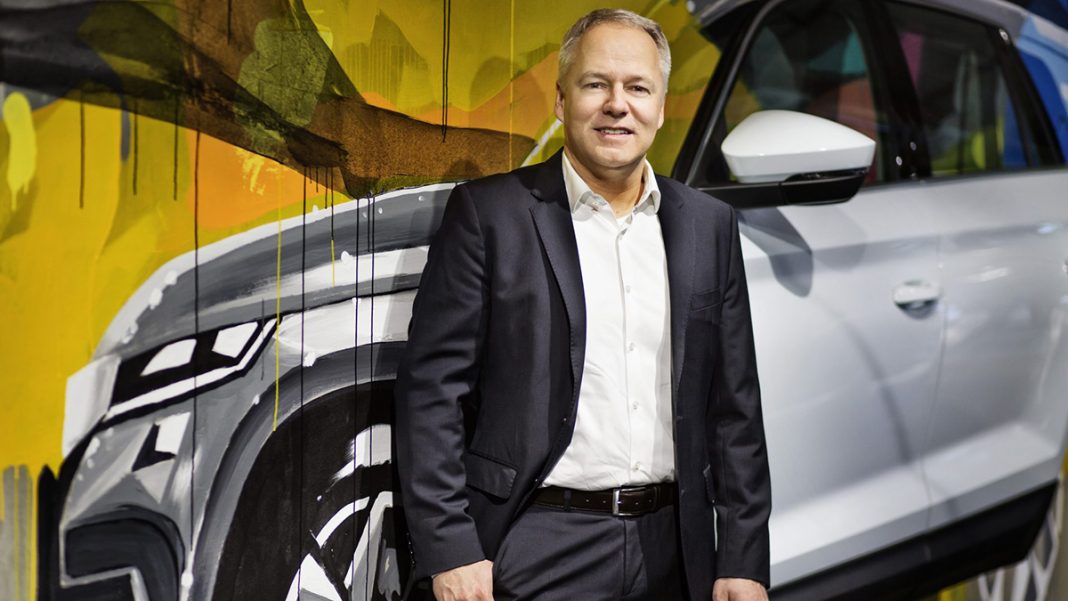The car of the future will be controlled by voice commands. However, many drivers are already taking advantage of the technology to control several vehicle functions by voice. ŠKODA’s new advanced voice assistant goes by the name of Laura.
She understands natural speech; the driver does not have to use fixed commands or phrases. The feature is included in the range of functions in the top Amundsen infotainment system and is available in the new ŠKODA KAMIQ and the compact model ŠKODA SCALA. The extended voice control is activated with the words ‘Okay, Laura!’. By introducing this voice command feature, ŠKODA underscores the position of its two latest models as infotainment and connectivity pioneers in their segments.
Andre Wehner, ŠKODA CDO, and Sebastian Lasek, Head of Connectivity, talk in a joint interview about the advantages of Laura, the digital voice assistant, and her ability to learn.
Okay, Mr Wehner! Why is ŠKODA using a digital voice assistant?
Andre Wehner: We know from our customers that accessing functions using natural language is becoming increasingly important. That is why we introduced the digital assistant, Laura, who supports our customers in their everyday lives. Laura is a perfect addition to the Simply Clever features that we have been offering in our vehicles since the 1920s and also complements the digital features.
What is the advantage of the Laura voice assistant?
Wehner: Laura offers more comfort. As a true mobility companion, she supports ŠKODA drivers on the go, and when planning journeys at home and visiting the ŠKODA website. In the vehicle, drivers can operate call, navigation and infotainment functions using voice control, enabling them to always keep their hands on the steering wheel and communicate with the vehicle in a natural way. At home, customers can get information about the vehicle’s status, including the fuel or battery charge level and the current parking location, from their smart home assistants such as Alexa or Google Home.
Okay, Mr Lasek, what are the advantages of a voice assistant for the vehicles’ interior design?
Lasek: Anyone driving a new ŠKODA has the choice of using voice control or conventional haptic controls. We take customers’ wishes into account when designing our vehicles, and we observe how voice control is used. In many instances, the feature also allows us to reduce the number of buttons and switches and makes operation easier.
Is Laura capable of learning?
Wehner: Laura is still young and offers basic functions, but she is continually developing. In the new OCTAVIA, she understands natural speech much better than before. Laura offers Alexa or Google Home users a growing number of functions.
What languages does Laura understand?
Lasek: Laura is a real polyglot. She understands Danish, Dutch, Finnish, Greek, Polish, Portuguese, Russian, Swedish and Turkish. She even understands natural speech in Czech, English, German, French, Italian and Spanish: You no longer have to say: “Increase the temperature by 1 degree”, but can simply say, “Laura, I’m cold.” Laura recognises passengers’ wishes from their previous user behaviour.
Which vehicles already come with Laura?
Lasek: ŠKODA drivers can speak to Laura in the SCALA, KAMIQ, SUPERB iV and the new OCTAVIA. She will be available in all future ŠKODA models.
Which languages can Laura use to communicate with other voice assistants?
Wehner: Laura can communicate with the widely used voice assistants Amazon Alexa and Google Home. Via Alexa, Laura understands English, German and French – Spanish and Italian will be launched soon. Google Home is available in English; French, German, Spanish and Italian will follow in 2020.
What can we expect from Laura in the future? How is she evolving and where will we see her in the future?
Wehner: We are continuously developing, improving and expanding the capabilities of the Laura voice assistant. The system will be available in upcoming models. In the future, for example, Laura will be able to adjust the first vehicle functions and react even more flexibly to complete spoken sentences and even engage in digital small talk. In the future, extended voice control applications are also conceivable outside the vehicle in other areas related to ŠKODA, such as in mobile or web apps and in the online configurator. For example, customers in Spain can already speak to Laura on local ŠKODA importers’ websites. Laura will soon be available on importers’ websites in other countries.
How do you teach dialects to a voice assistant?
Wehner: As far as dialects are concerned, we define synonyms for specific words in the respective language model. This is how we ensure Laura understands our customers as they speak in everyday language. Laura already understands some dialects and she learns quickly.





























